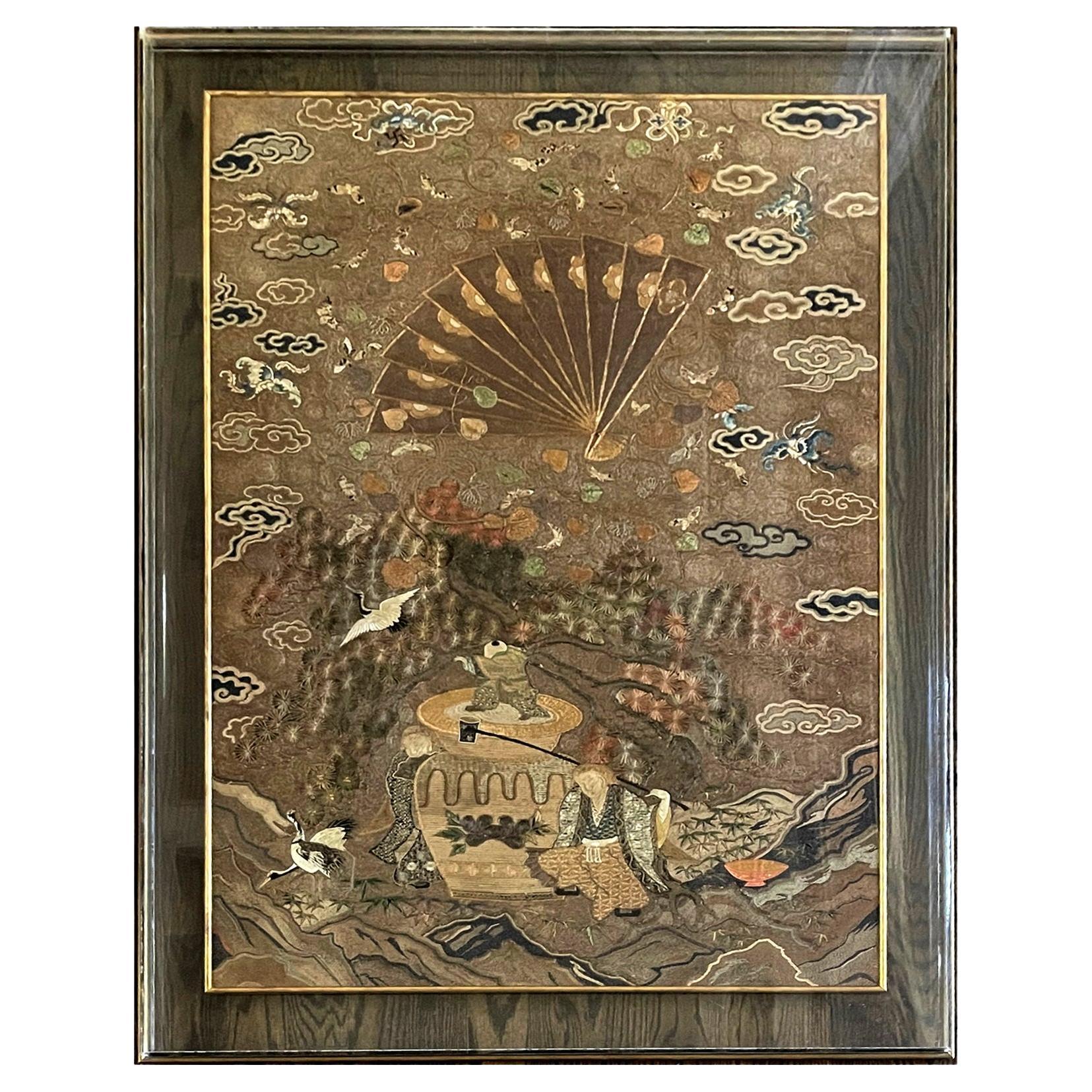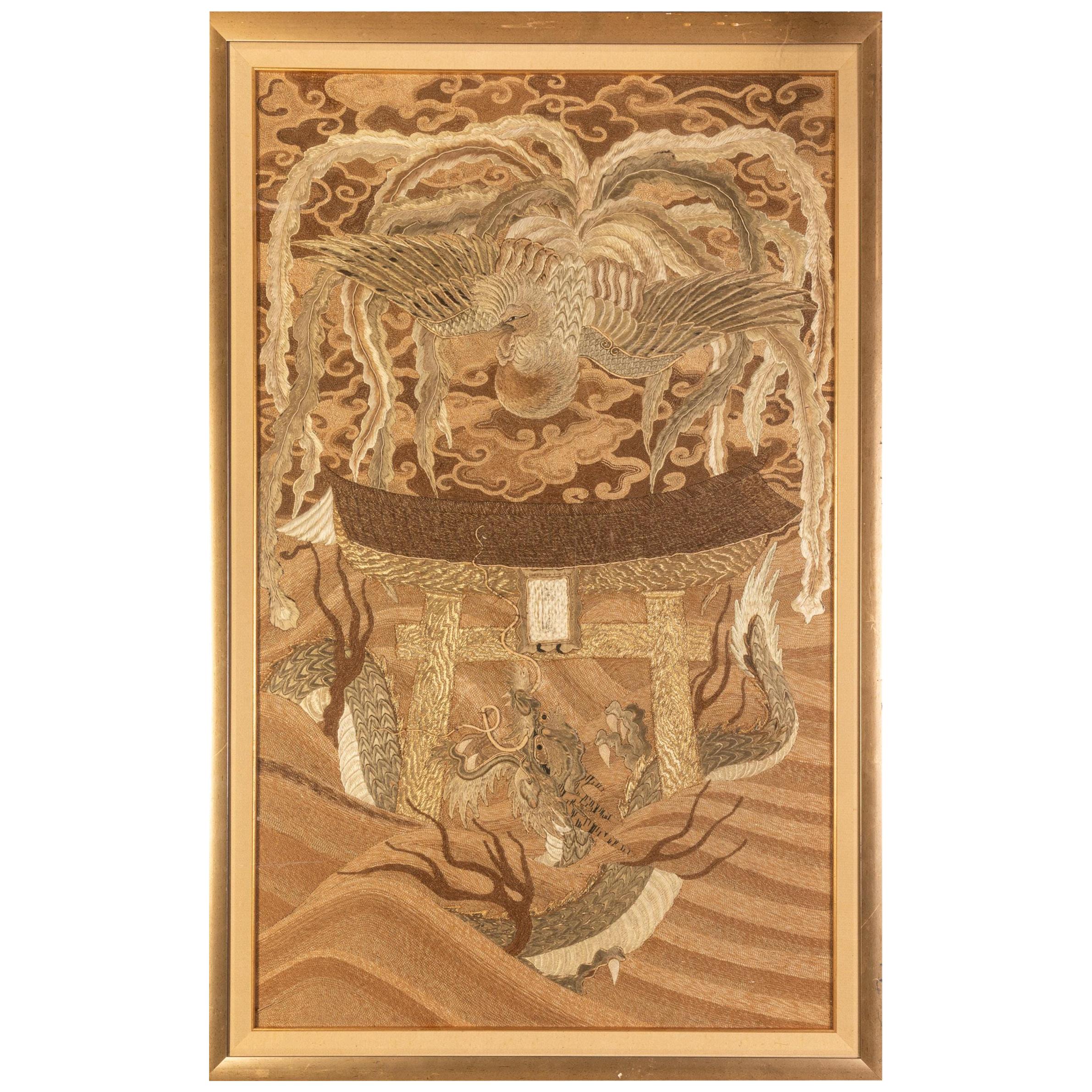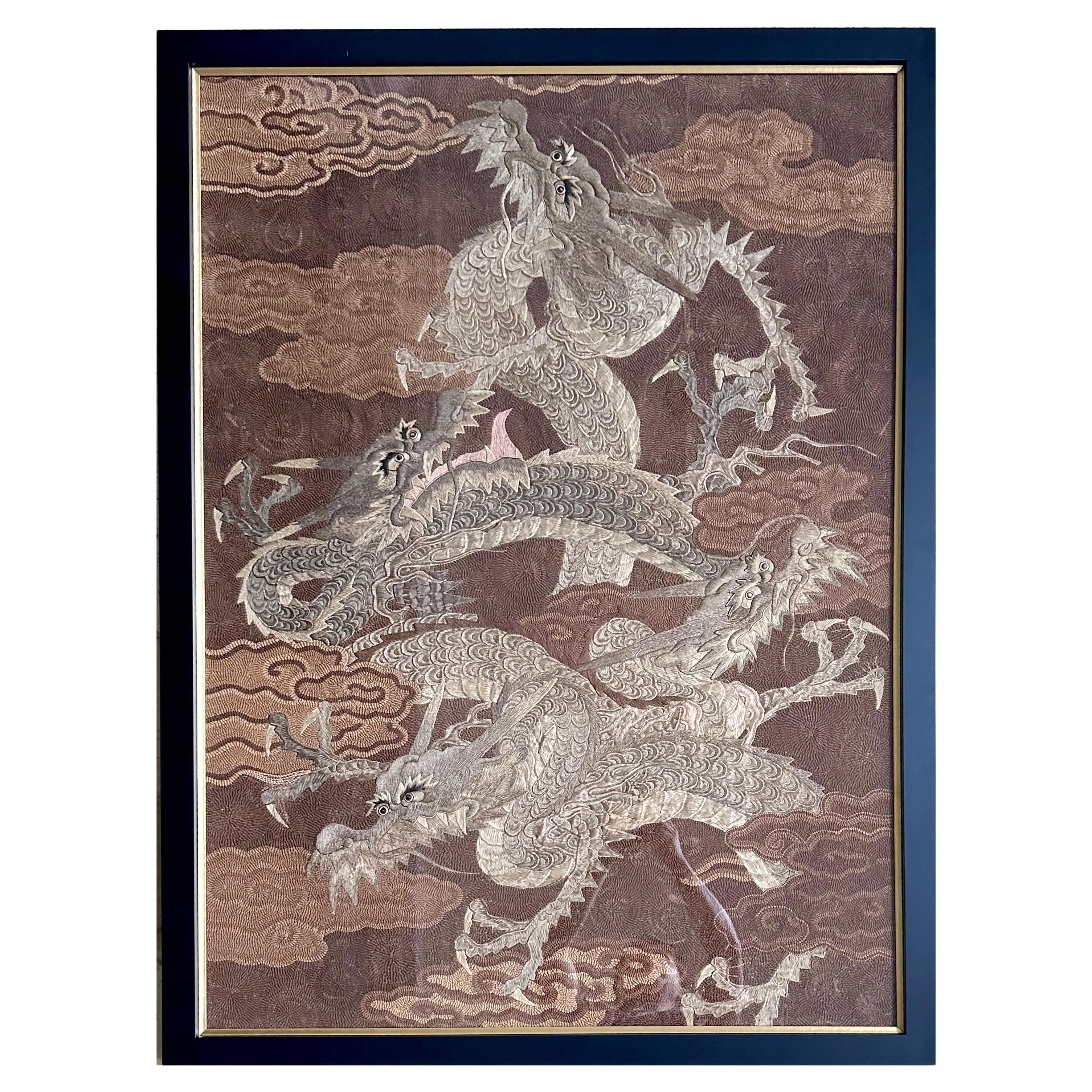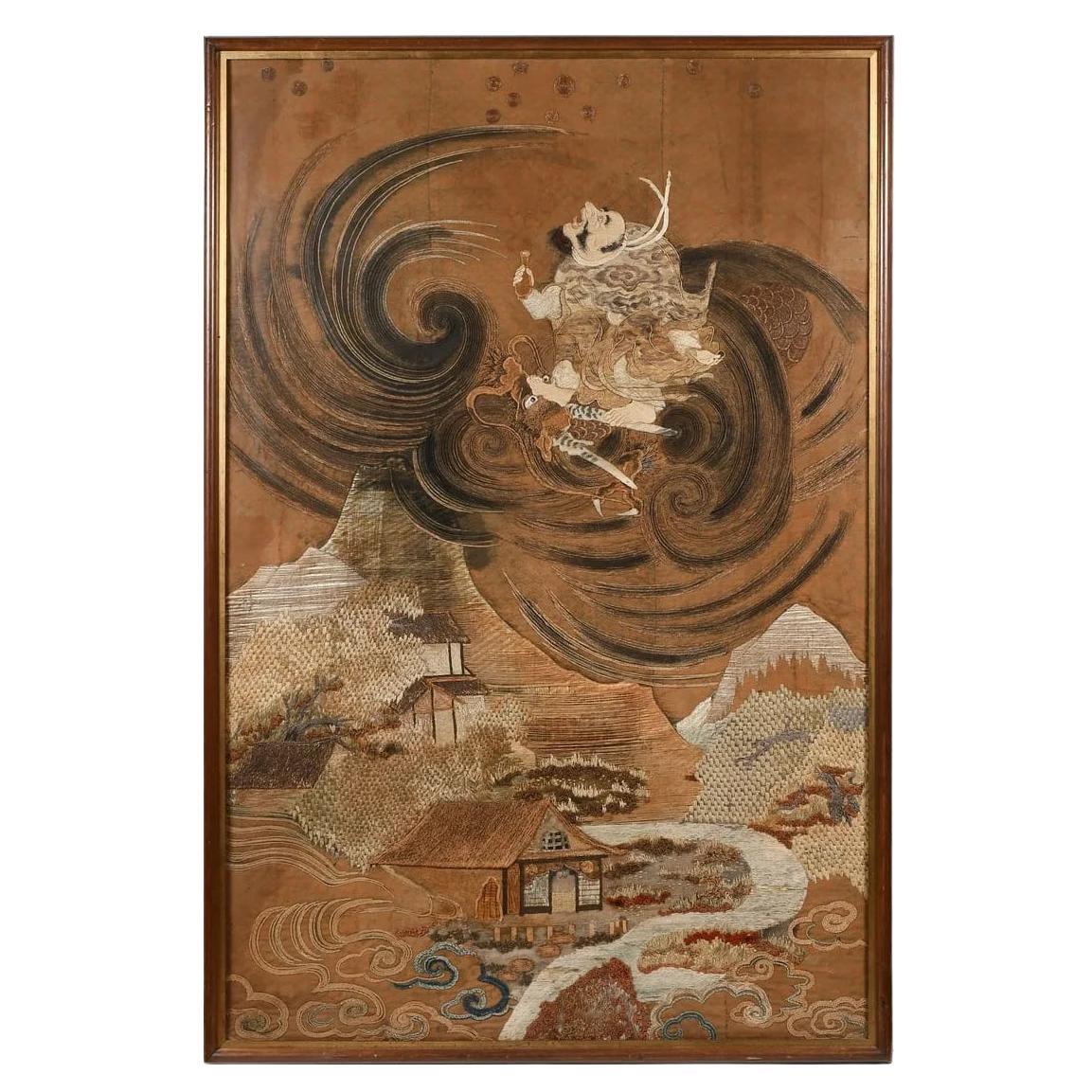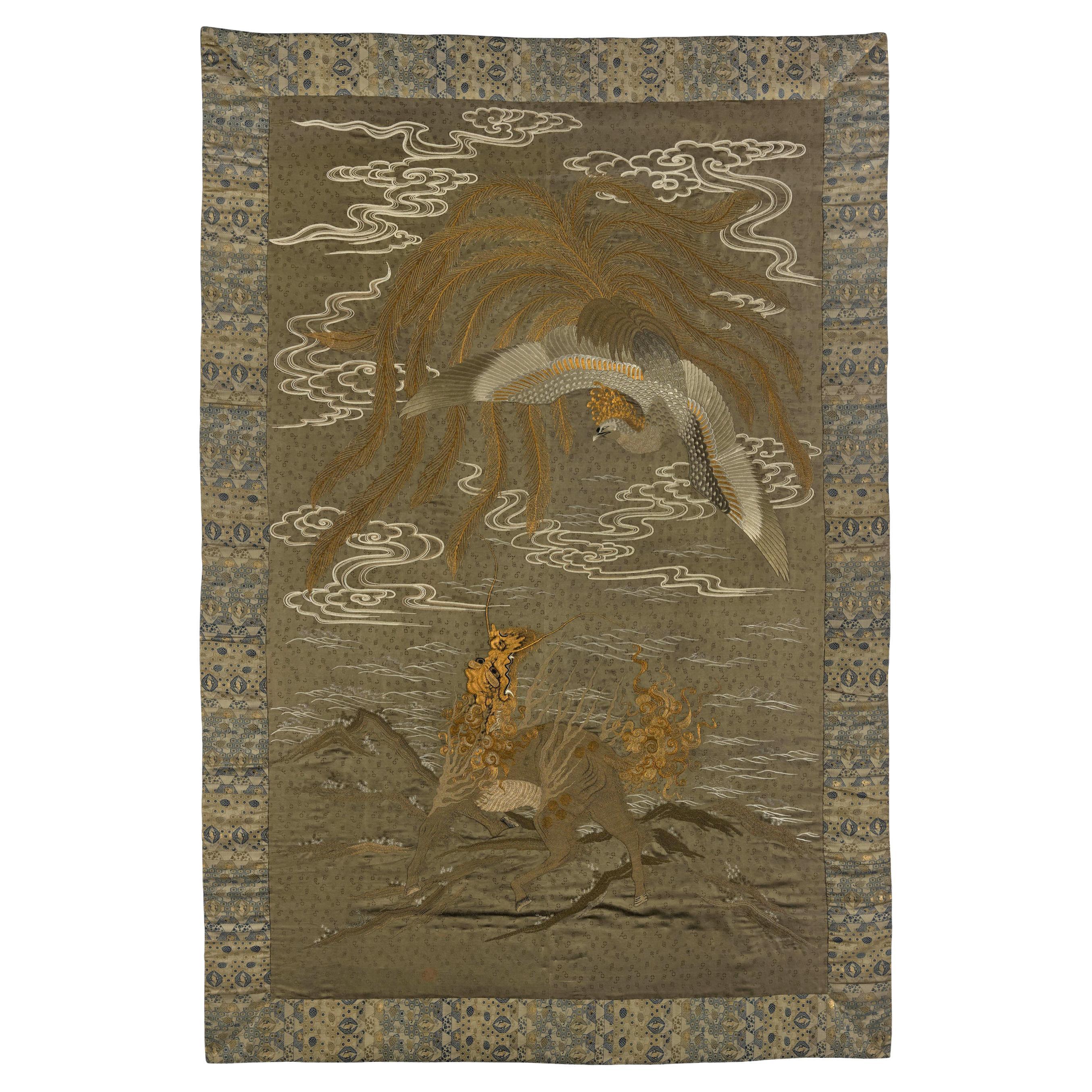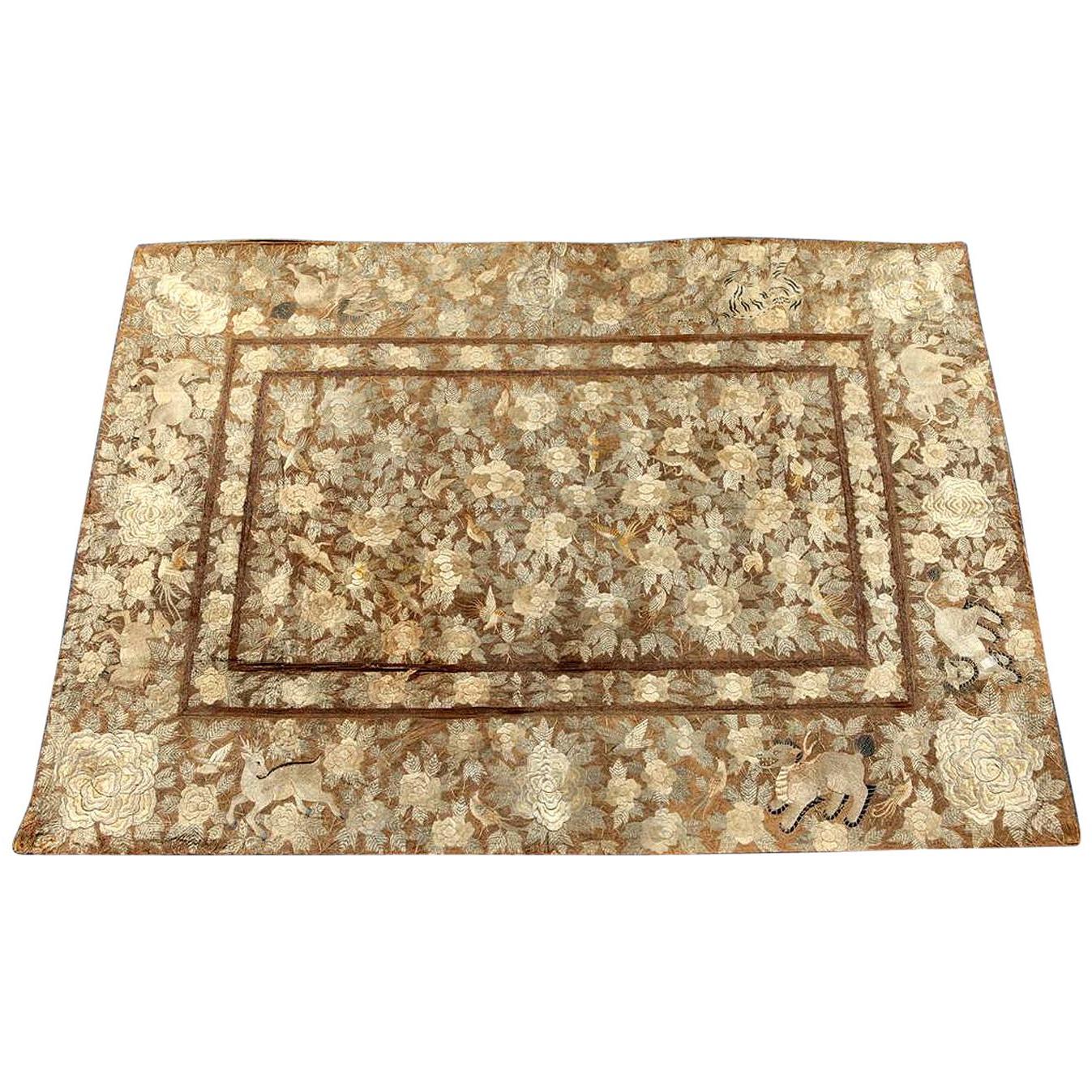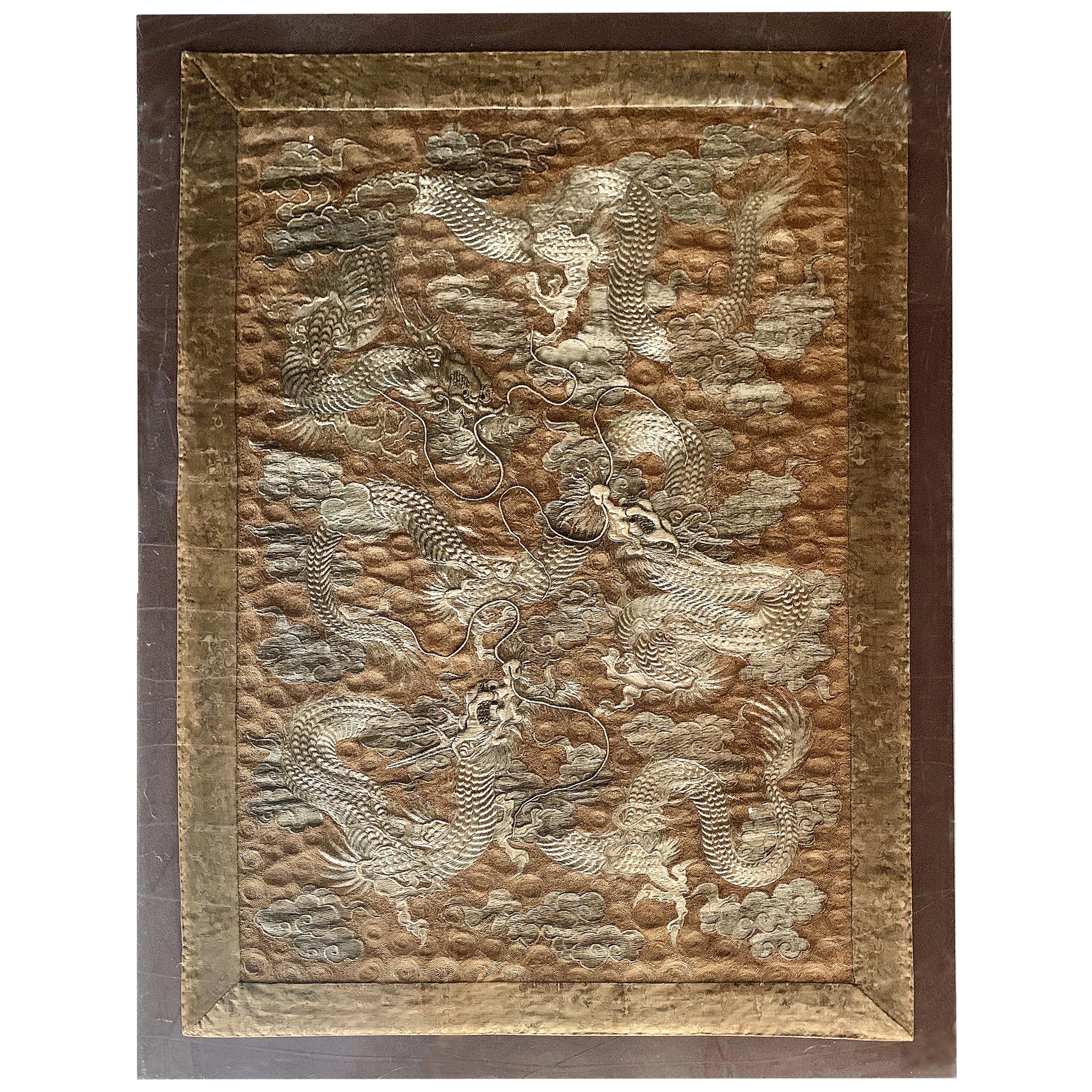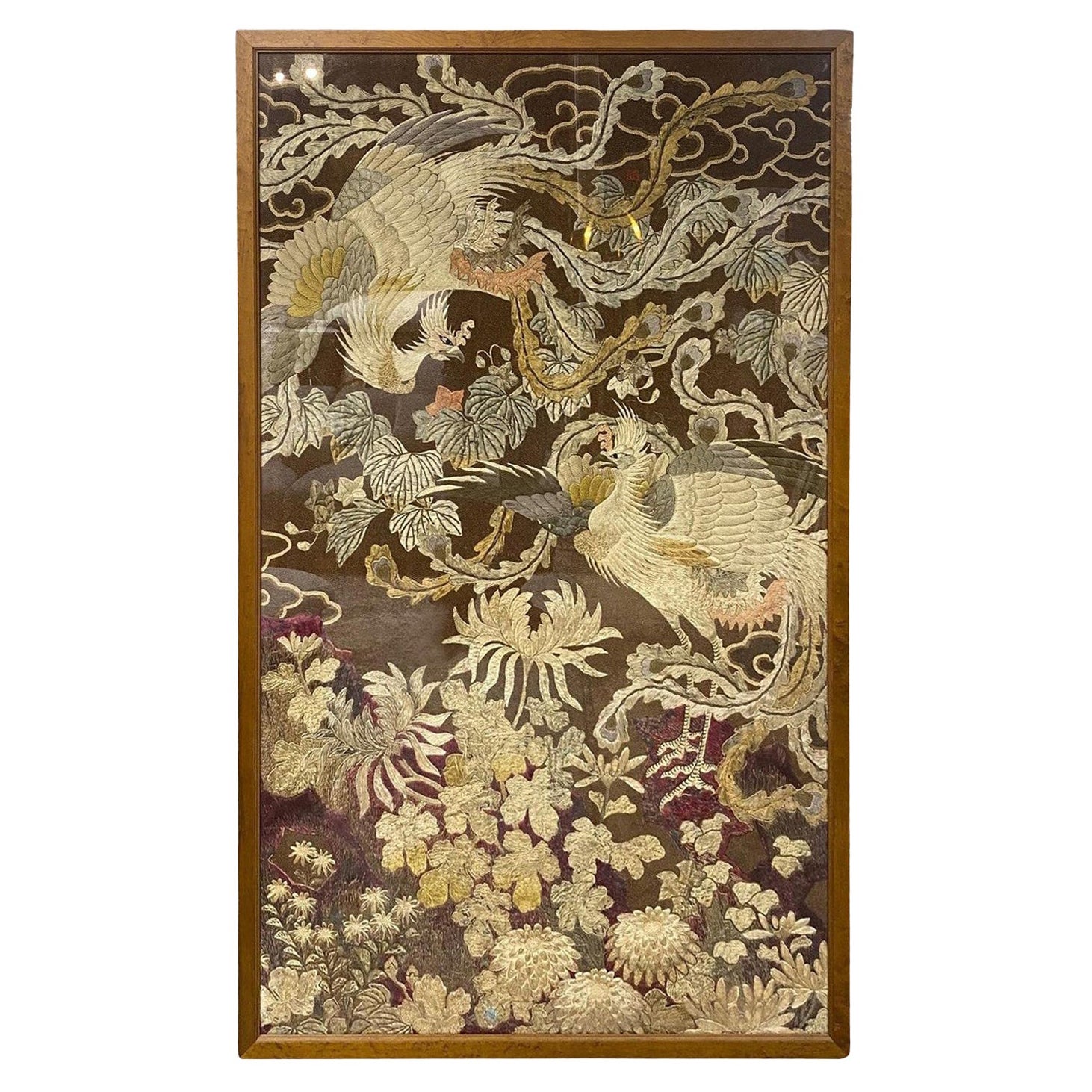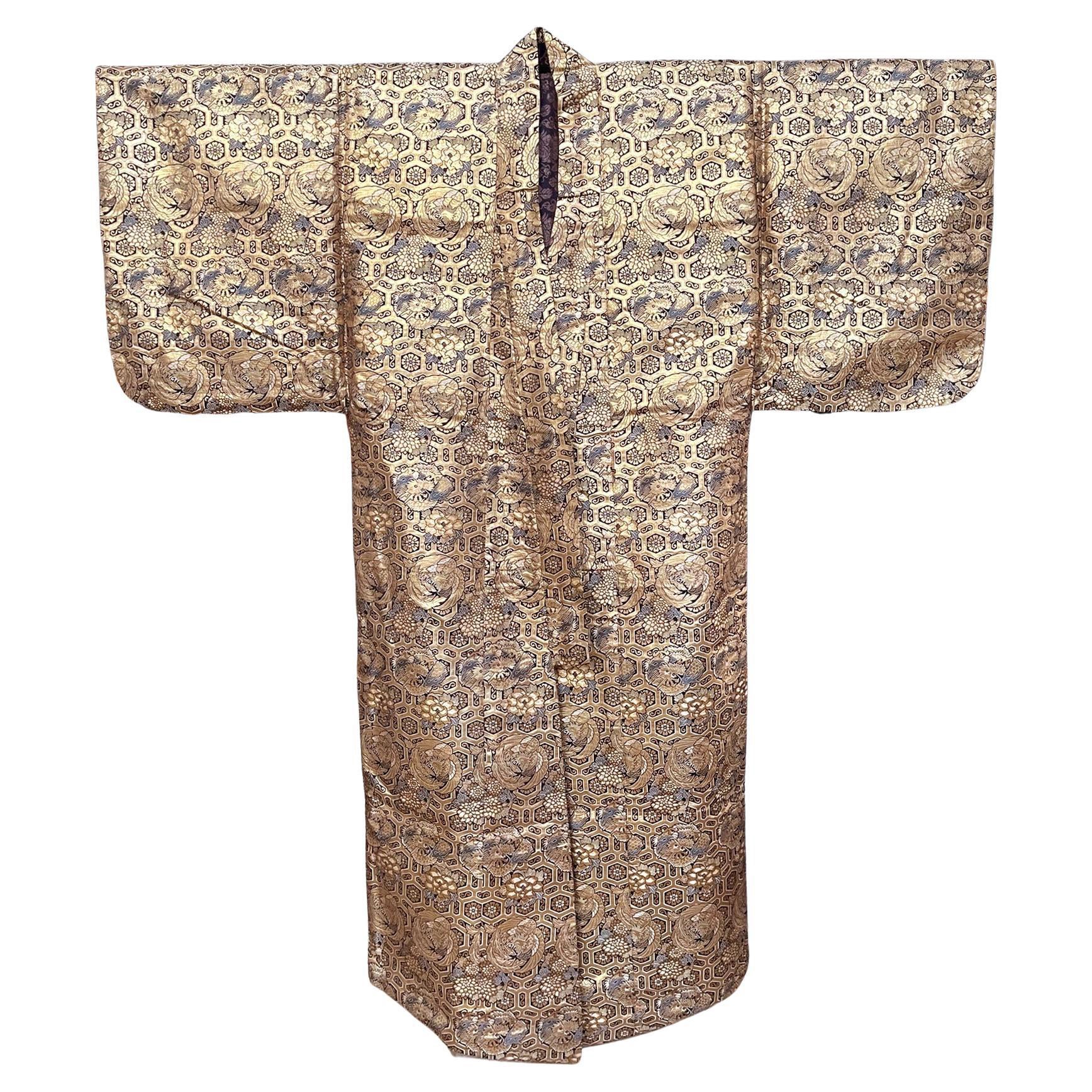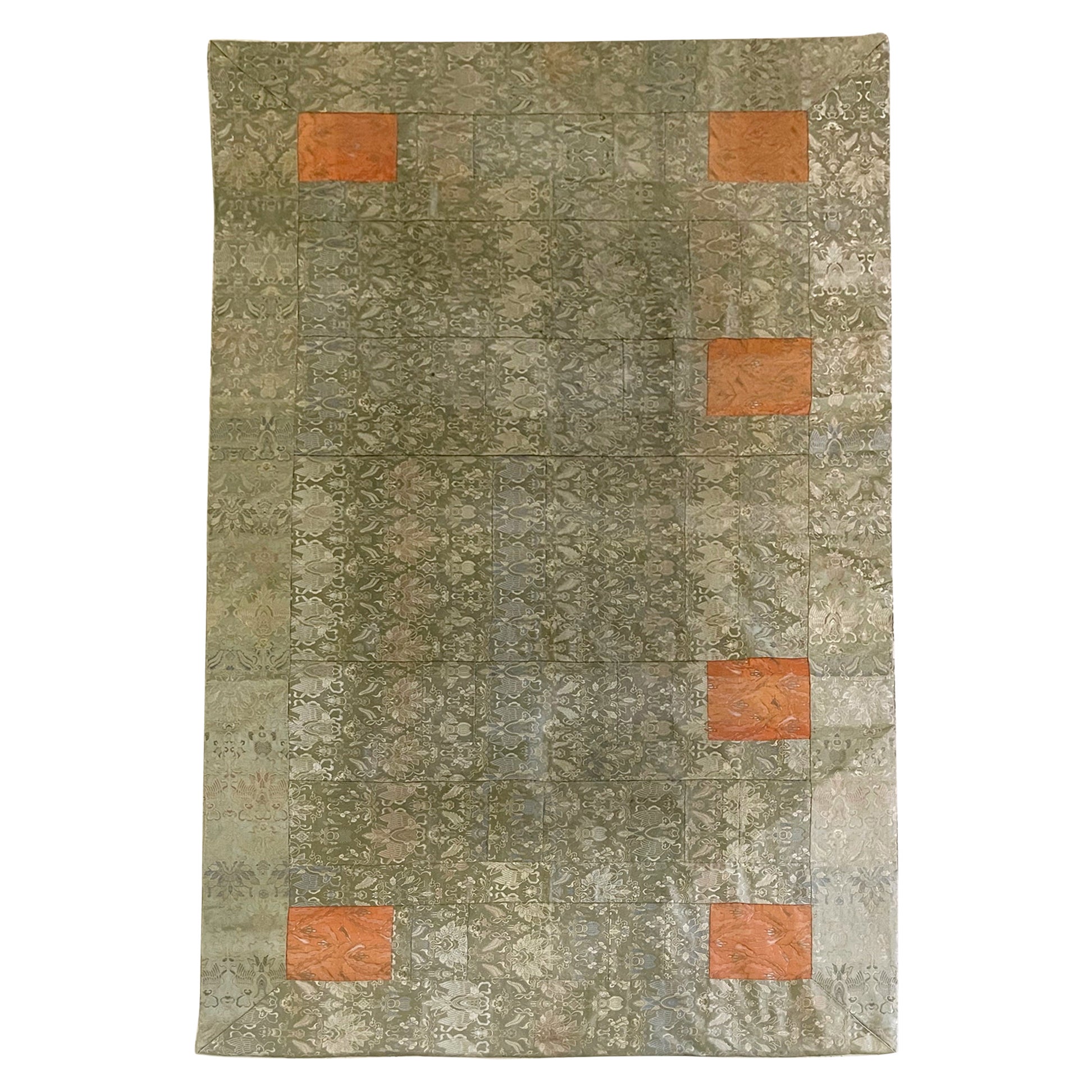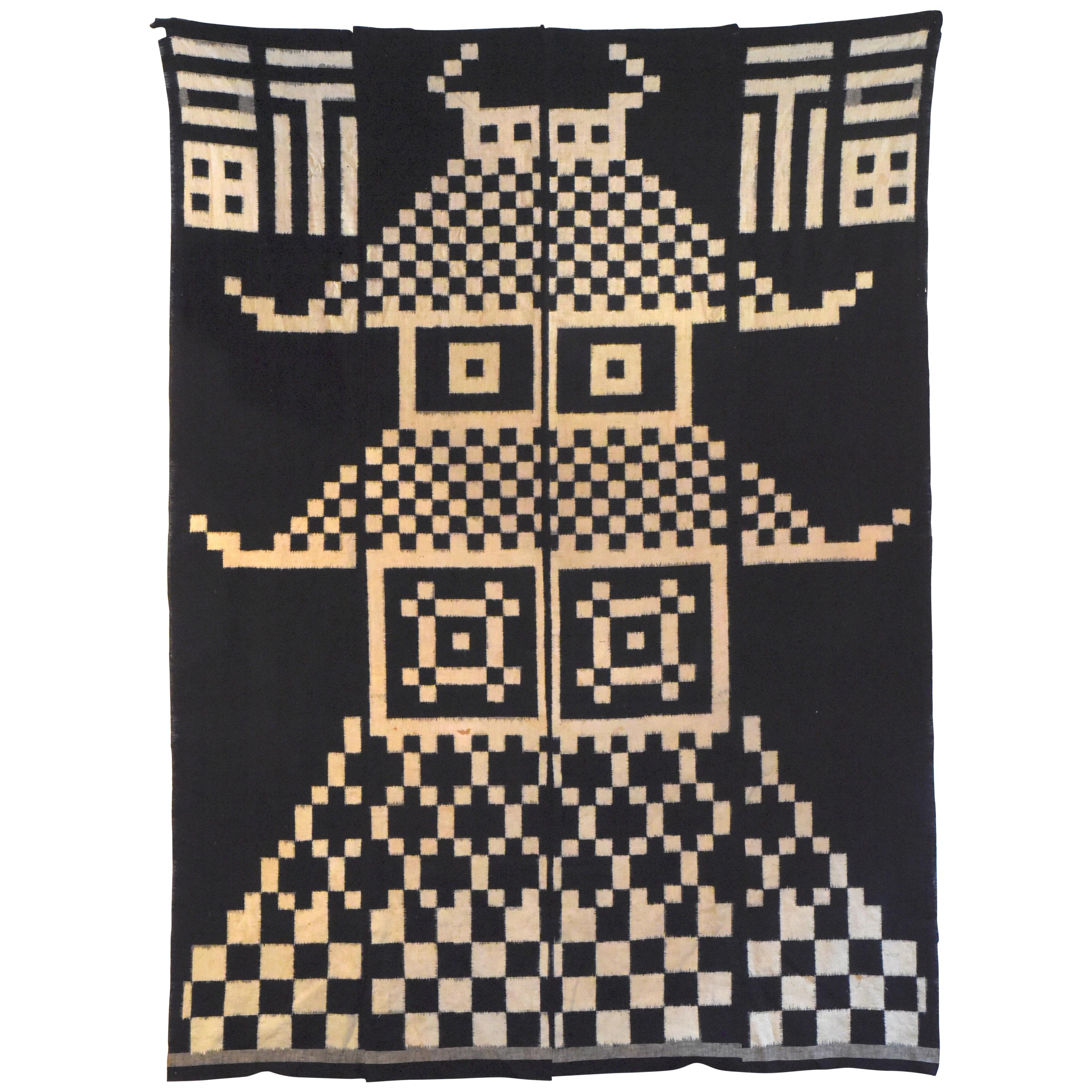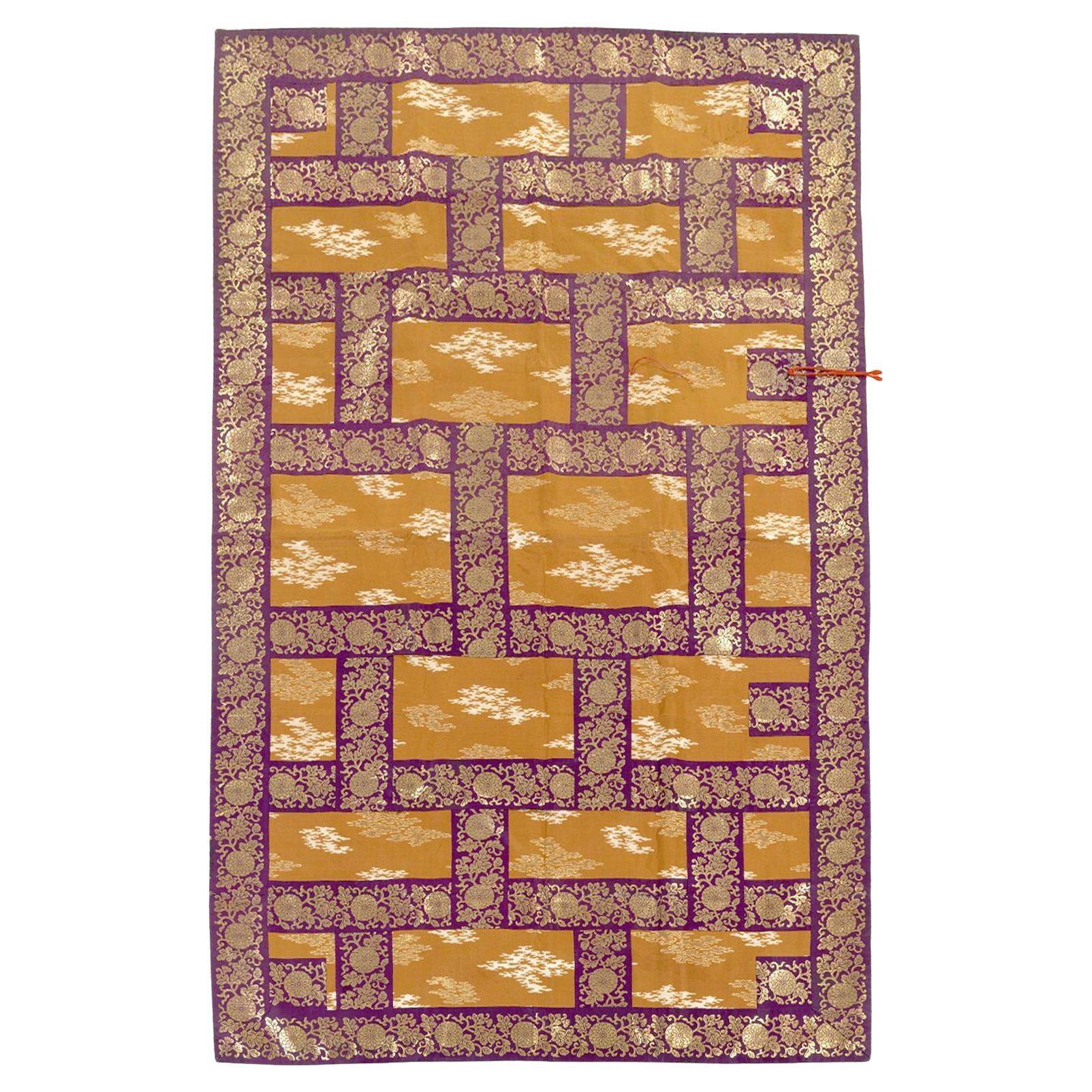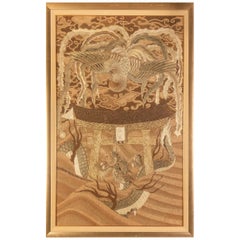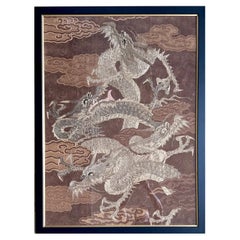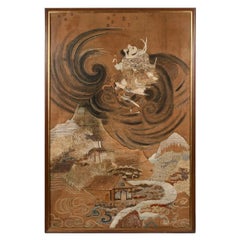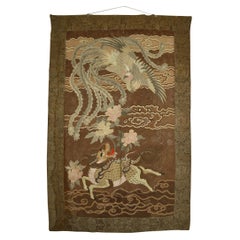
Large Meiji Period Silk Embroidery Tapestry, Kirin & Phoenix, Japan, circa 1890
View Similar Items
1 of 19
Large Meiji Period Silk Embroidery Tapestry, Kirin & Phoenix, Japan, circa 1890
$3,597.54List Price
About the Item
- Dimensions:Height: 66.93 in (170 cm)Width: 44.1 in (112 cm)Depth: 0.4 in (1 cm)
- Style:Meiji (Of the Period)
- Materials and Techniques:
- Place of Origin:
- Period:
- Date of Manufacture:circa 1890
- Condition:Wear consistent with age and use. Minor losses. Minor structural damages. Minor fading. Overall in relatively good condition. Small defects: tears, discolorations, traces of small restorations.
- Seller Location:L'Etang, FR
- Reference Number:1stDibs: LU3948315987921
Authenticity Guarantee
In the unlikely event there’s an issue with an item’s authenticity, contact us within 1 year for a full refund. DetailsMoney-Back Guarantee
If your item is not as described, is damaged in transit, or does not arrive, contact us within 7 days for a full refund. Details24-Hour Cancellation
You have a 24-hour grace period in which to reconsider your purchase, with no questions asked.Vetted Professional Sellers
Our world-class sellers must adhere to strict standards for service and quality, maintaining the integrity of our listings.Price-Match Guarantee
If you find that a seller listed the same item for a lower price elsewhere, we’ll match it.Trusted Global Delivery
Our best-in-class carrier network provides specialized shipping options worldwide, including custom delivery.You May Also Like
Japanese Silk Embroidery Tapestry Meiji Period
Located in Atlanta, GA
A spectacular Japanese embroidered silk panel beautifully presented in a gilt frame suspended in a lucite shadow box with gilt wood border. The silk picture is dated to 1890-1910s toward the end of Meiji Period, when Japanese started to participate international expose by presenting its best art and craft. Elaborate embroidered silk tapestry like this was very popular among westerners due to its superb craftmanship and also exotic subject matter that was often derived from classic Japanese folklore, mythology and various motifs. The tapestry on offer is such an example. It depicts an old couple...
Category
Antique 1890s Japanese Japonisme Textiles
Materials
Fabric, Silk, Lucite
Framed Japanese Antique Phoenix Dragon Embroidery Tapestry Meiji Period
Located in Atlanta, GA
A visually stunning Japanese embroidery tapestry circa 1890s-1900s late Meiji period, presented with a linen matt with gold trim in a gilt wood frame. The design showcases a flying p...
Category
Antique 1890s Japanese Japonisme Textiles
Materials
Silk, Giltwood
Framed Japanese Embroidery Dragon Tapestry Meiji Period
Located in Atlanta, GA
A striking Japanese embroidery tapestry circa 1890s Meiji period presented in a gilt wood frame under glaze. The design features four dragons coiling and slithering in the clouds. The most auspicious mythological creature, dragon was a very popular motif in Japanese textile art. Viewing this particular piece, one is struck by the superb craftsmanship with the profuse use of silver threads in satin stitches and complex chain stich coiling that create the background. The slight relief technique was also used on parts of the dragon heads, rendering the piece a strong sense of dimension and motion. The textile itself measures about 32.5"x46".
Japanese Meiji textiles were widely exhibited in the west during turn of the 20th century at the international exposition. It was used to showcase the Japanese aesthetics with the techniques at their pinnacle. These expositions solidified the country's images overseas and felled the Japanese craze in the west, which turned out to be a long-lasting influence on the western art. Many pieces were purchased and stayed in the west. As there is no brocade border present, the piece is likely the main part with the central motifs of a larger tapestry and was later framed for display.
For two similar dragon tapestries...
Category
Antique 1890s Japanese Meiji Textiles
Materials
Textile, Wood
Framed Japanese Antique Embroidery Sennin Tapestry Meiji Period
Located in Atlanta, GA
A stunning Japanese embroidery tapestry circa 1880s-1900s from late Meiji period, presented with an original wood frame with inner gold trim. The tour-de-force embroidered tapestry s...
Category
Antique 1890s Japanese Meiji Textiles
Materials
Silk, Giltwood
Massive Japanese Embroidery Tapestry Display Box Meiji Period
Located in Atlanta, GA
A massive Japanese embordered tapestry professionally displayed in a custom acrylic shadow box. The fine work of textile art is dated to 1890-1920s, late Meiji (1868-1912) or possibl...
Category
Early 20th Century Japanese Japonisme Textiles
Materials
Brocade, Silk, Acrylic
Antique Japanese Embroidery Tapestry Panel Edo Period
Located in Atlanta, GA
A large Japanese silk embroidery tapestry circa 18th century Edo period. Possibly an altar tablecloth originally, the embroidered textile pane...
Category
Antique 18th Century Japanese Edo Textiles
Materials
Silk
$3,200 Sale Price
20% Off
Recently Viewed
View AllMore Ways To Browse
Antique Japanese Tapestry
Japanese Silk Tapestries
Meiji Embroidery
Meiji Silk Embroider
Phoenix Tapestry
Meiji Tapestry Silk
Large Japanese Embroidery Tapestry Meiji Period
Asian Women
Asian Wall Hanging
Textile Art Japan
Chinese Framed Silk
Japanese Kimono Art
Vintage Embroidery Art
Silk Embroidered Panels
Framed Textiles Asian
Asian Style Sofa
Asian Thread Embroidery
Large Suzani
